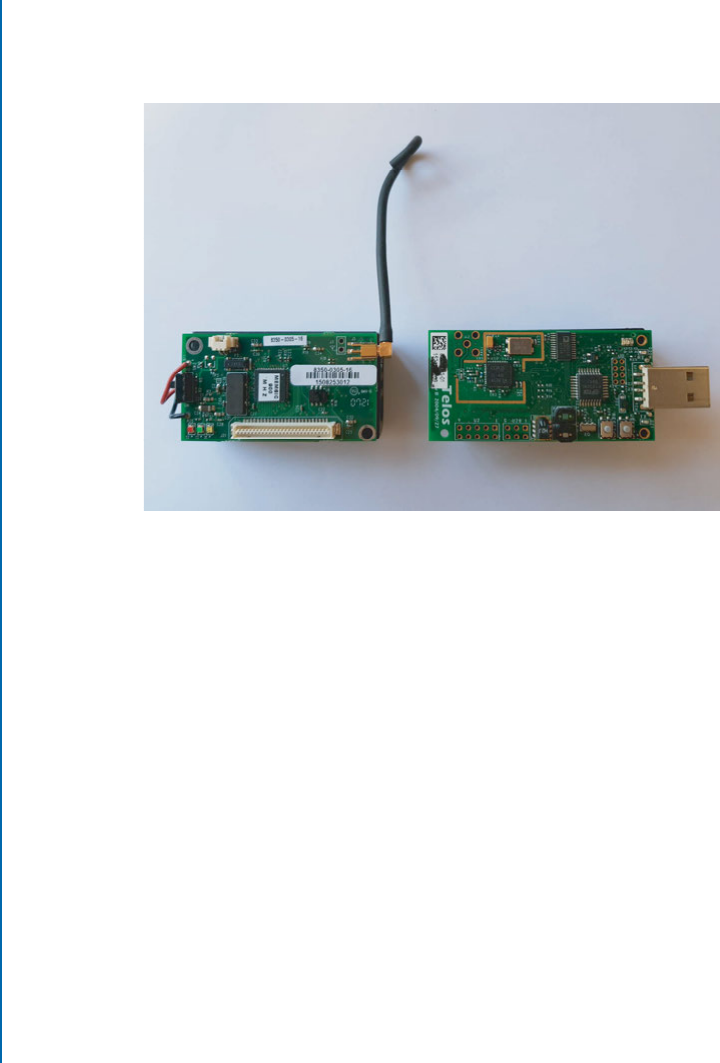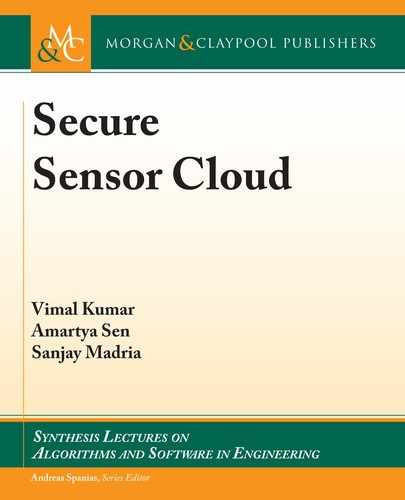
1
C H A P T E R 1
Introduction
e sensor cloud [19] is a new paradigm of computing for Wireless Sensor Networks (WSNs).
It integrates multiple wireless sensor networks to share resources in a layered architecture and
provide on-demand sensing as a service to different users at the same time. It decouples the users
and the providers (owners) of sensing as a service in a sensor cloud network. e sensor cloud
lowers the barrier of use of WSNs and makes it easier for users to create, deploy, and use sensing
applications on-demand with embedded sensors and enables cross-compatibility of WSNs that
use different platforms and technologies. Many different applications, such as environmental
monitoring, disaster management, battlefield monitoring, and cyber-physical applications, can
use sensor cloud infrastructure. In many of these applications, an integral part of building a
successful WSN application is security. Although a sensor cloud makes it easier to deploy ap-
plications over multiple WSNs, it introduces new security challenges due to user-centric on-
demand services. In this introductory chapter, we will discuss the security challenges that need
to be tackled in order to build a secure sensor cloud infrastructure. We will start by taking a look
at the wireless sensing devices and WSNs before discussing the concept of a sensor cloud in
detail. We will then provide the aforementioned security challenges in building a sensor cloud
and finally discuss four specific challenges that are integral to building a secure sensor cloud.
1.1 WIRELESS SENSING DEVICES AND WIRELESS
SENSOR NETWORKS
Wireless sensors are small but versatile devices that can be equipped with various types of envi-
ronmental, physiological, biological, physical, or chemical sensors. In addition to their sensing
capabilities, wireless sensors also have a small amount of on-board memory, storage, computa-
tional power, and communication capability. ey can be used as compact sensing and compu-
tational devices either as individual nodes or in the form of a distributed wireless network that
not only senses data but also processes it before communicating it to the user. Wireless sensors
are also referred to as motes. ere are many different types of motes available in the market
today from various manufacturers and they differ in the capabilities that they offer. One of the
important aspects of a wireless sensor/mote is its physical size. e vision of projects such as
Smart Dust and Neural Dust is to eventually have motes with micrometer or even nanometer
dimensions that are smaller than specs of dust and can be deployed completely unobtrusively.
While there is a substantial amount of work in progress [7, 8] focusing on reducing the size
of motes, the currently available off-the-shelf motes are considerably larger in size. Two of the

2 1. INTRODUCTION
widely used motes in WSN research are the Mica2 and the TelosB motes from Memsic which
are both only slightly larger than 50 30 mm
2
. Figure 1.1 shows Mica2 and the TelosB motes
as an example of the sensor hardware that can generally be found on current off-the-shelf motes.
Figure 1.1: Mica2 and TelosB motes.
As mentioned above, wireless sensors can be used as individual sensing nodes but they
can also be programmed to work in a distributed network environment. e on-board memory,
microprocessor, and storage allows a wireless sensor to be programmed to do a specific task and
the radio allows them to create a network with other wireless sensors. Such a network called a
WSN covers a larger geographical sensing area than individual nodes. Wireless sensors can be
programmed to self-organize in WSNs with any topology that fits the requirements to perform
various sensing and communication tasks. e small size of these devices and their low cost
makes them ideal to be deployed quickly and inconspicuously in places that may be hazardous
for human beings or where setting up networking infrastructure may not be feasible for any other
reason. WSNs, therefore, have applications in many areas such as battlefields, environmental
monitoring, habitat monitoring, structural monitoring, healthcare, heavy industry etc. Some
other examples of such an application is in battlefields where sensing may be required but setting
up sensing and networking infrastructure may not be possible. Another application of wireless
sensors is in measuring volcano-seismic activity [10], where the terrain itself is hazardous and
ever-changing, and setting up permanent structures is not feasible. Readers interested in sensors
and WSNs can further read [125, 126], and [127].
e small size of wireless sensors is very useful and is their prime feature, however, it gives
rise to a number of processing constraints. e small size limits the amount of resources available
..................Content has been hidden....................
You can't read the all page of ebook, please click here login for view all page.
